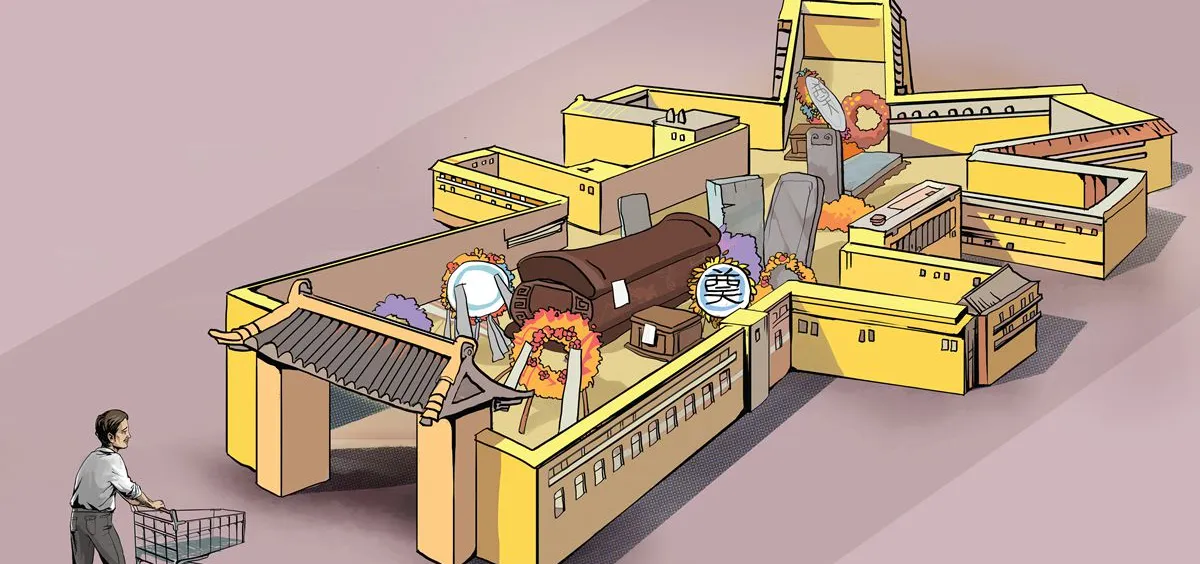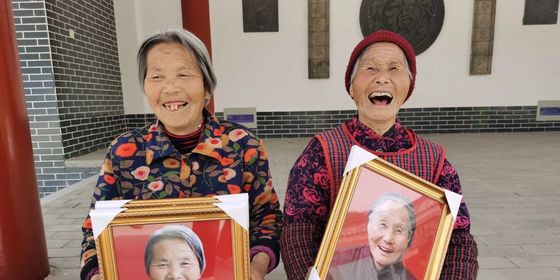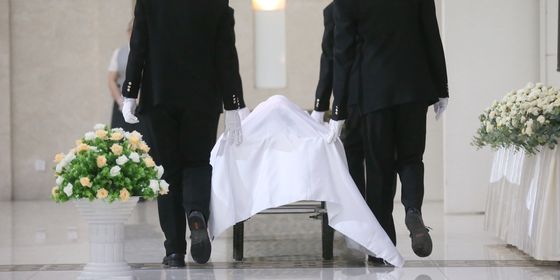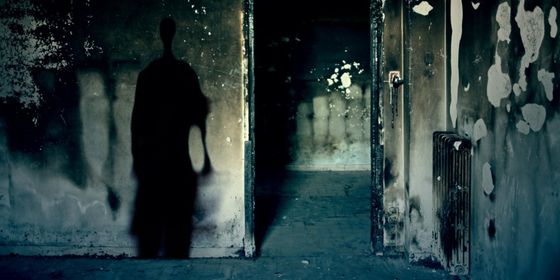Life can be hard. Death isn’t easier.
High housing prices have led to the term 房奴, or “house slave”. But your final resting place is becoming just as much of a worry as your current resting place, giving rise to yet another depressing term, “grave slaves”. The skyrocketing cost of shuffling off the mortal coil is burning up wallets around the nation.
According to the annual Green Book of Funerals: Report on Funeral Development in China released in 2015 by the China Funeral Association affiliated with the Ministry of Civil Affairs, in metropolises like Beijing, the cost of a cemetery burial ranges from 40,000 RMB to hundreds of thousands, with Beijing’s annual disposable income per capita at just 48,000 RMB.
The cemetery plot is, of course, the main cost, but that’s just the beginning. A list of common death expenditures has become popular online: 2,500 RMB for time in the morgue (three days); 4,000 RMB for a shroud; 5,000 RMB for an urn; 3,000 RMB for body transportation; 2,000 RMB for cremation; 1,000 for depositing the ash at a funeral home; 1,600 RMB for decorations in the viewing room; 2,500 RMB for renting a hall for the wake (one hour, 50 people); and 3,000 RMB for various funerary goods. Adding up all this (along with a cemetery plot for 30,000 RMB), the total cost was 54,600 RMB.
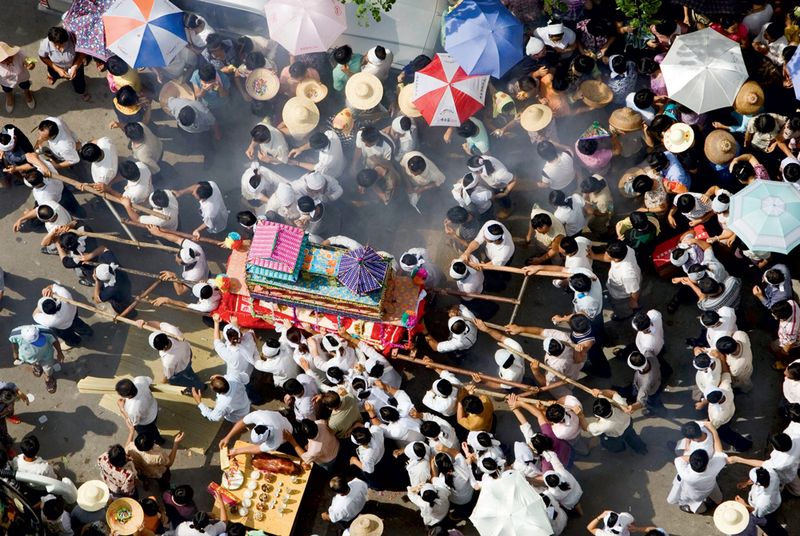
A 1,000-strong procession of mourners march through the streets of Sanya, Hainan Province
This, for somewhere like Beijing, is pretty minimal. But, much like the trends weddings have experienced over the past few years, China’s newfound wealth has given rise to luxury funerals. One funeral in Wenling, a coastal city in Zhejiang Province, in 2011 received international attention. Five brothers commandeered the grounds of a high school to bid their mother goodbye, along with thousands of onlookers and attendees as well as nine limousines decked out in flowers, a uniformed marching band, and a 16- gun salute. According to reports from Chinese media, the funeral ceremony cost around five million RMB in total and it happened right after Wenling passed a regulation against funeral “extravagance and waste”.
According to a financial statement from Fu Shou Yuan, one of the largest Chinese cemetery companies, its overall gross margin has remained at around 80 percent in recent years, which has caused wide discussion about how much value people place on the big goodbye. Yes, people like a big send-off for their dearly departed, but the funeral industry is making a killing. The rampant profiteering has brought on comparisons to the real estate market and many are wondering if they can afford to die at all.
The thing is, on paper there are actually some very cheap urns and cemeteries, but the driving force for expensive funerals in China is the same as everywhere else: tradition. In the past, cremation was less common. Burial was always the proper way of dealing with corpses, hence the idiom, “入土为安”, meaning that the deceased can only rest after being buried. And for people who can afford it, burial is always the best option, complete with refined coffin, a spacious grave, and a big party for a great afterlife.
Funeral rites are a big issue for the whole family, and in the old days, people paid attention to the age of the deceased, cause of death, social status of the family, and even the fengshui of the grave site. And while the emperors and government officials who turned their ancient tombs into the tourist attractions of today spared no expense in their interment, modernity has made folks less picky.
Extravagant funerals took a nosedive with Mao and New China, and in 1985, the Communist Party issued China’s first funeral-related legislation, commanding citizens to “reject superstitious funerary customs and advocate frugal and reasonable ones”. But, in reality, the rules were selectively enforced from the very beginning. Even Mao himself was embalmed and laid in a vast mausoleum in Tian’anmen Square, with his jaundiced corpse a tourist attraction to this day, despite his opposition to the practice.
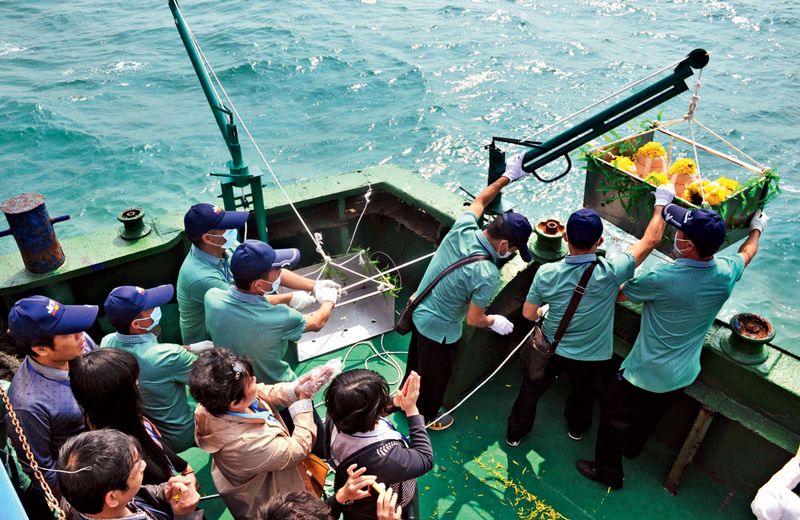
Workers prepare to scatter the ashes of the deceased at sea in Guangxi Province
Today, though cremation is more universal and strongly advocated, Chinese people are still opting for grand funerals and burials. Cemetery plots are hot real estate, especially because custom dictates that many who are cremated still want their overpriced urns buried.
Another factor in the booming cost of dying is China’s aging population. In 2015, citizens aged 65 and over reached over 200 million and the number will be more than 250 million in 2020. As a result, the funeral industry is expected to reach 600 billion RMB by that time, according to the China Funeral Association.
As ever, land is a problem. With around 9.3 million people dying each year, China is set to run out of graveyard space in six years, according to Taiwan newspaper Want China Times. Most cemeteries in China are government-controlled with the rest depending on permits from the government, which owns the land. However, it’s not clear whether more land will be allowed for graveyards. State monopolies on the graveyards are often blamed for the exorbitant fees and charges in the funeral industry, but with 9.3 million people to deal with every year, those fees are only going to get higher.
However, the market is stepping in; since 2004, certain parts of the funeral business have been gradually opened up. With more money entering the marketplace, a large number of one-stop-shop funeral services have emerged.
Zhang Kunren, director in charge of funeral direction at Eternal Shine, a funeral service company, states that their company can provide different packages for all needs, including cleaning and dressing the body, interment, contacting the crematorium and plot holders, holding the ceremony, and, if needed, moving a tomb to a different address and providing therapy for the family, with prices ranging from 20,000 RMB to millions. “It is the family of the deceased who decide which services are needed. They can choose according to their needs and budget. Usually, clients tend to pay more attention to the ceremony arrangements and the choice of cemetery,” says Zhang.
Such funeral service companies indeed provide much assistance, but many complain about hidden fees found in this sector, something of which the industry is well aware. “The arbitrary charges are not the only problem in this industry,” says Zheng Wenji, vice-president of Eternal Shine. “The whole industry lacks professionalism. Without enough professional workers and facilities, most of the current services are too simple and crude, which doesn’t show as much humane care as it should.”
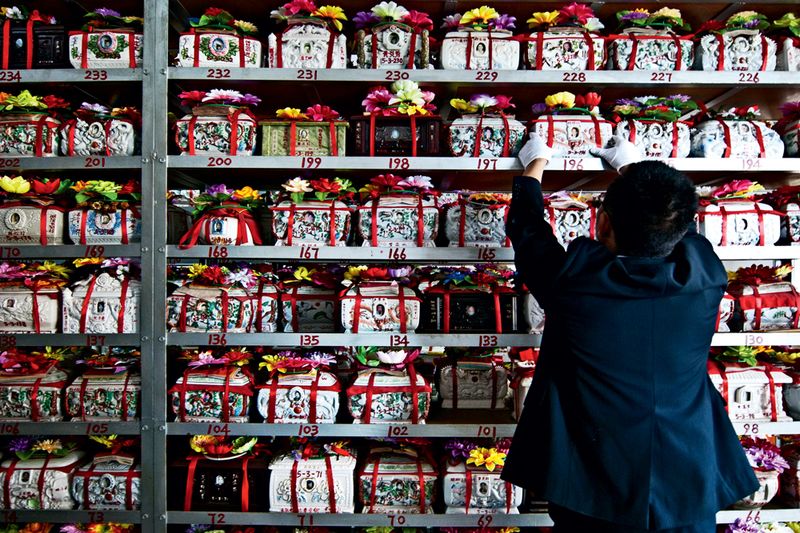
The price of an urn to hold cremated remains can be as low as 24 RMB in Xiamen, but few choose this cheap option
Spending money isn’t always a comfortable topic to speak about when dealing with the bereaved, so undertakers sometimes take advantage of the family’s grief and ignorance to charge more than needed. To some extent, in such a climate, the funeral industry is bound to be short on transparency.
Zheng believes the main problem in the industry isn’t so much about the price as it is a problem of standardization and professionalism. “Compared with many traditional companies, our services are not cheap because we are targeting medium-to-high end clients. But our clients don’t run away. They care less about the price than where their money goes and whether they are misdirected.”
Currently, Eternal Shine are cooperating with three top hospitals and 15 funeral homes, investing in decorating mortuary rooms in the hospitals so that they can have the services there. Zheng and his coworkers believe they can make a difference by bringing more cultural content and a humanistic spirit to the industry, but they admit it is not easy. “These businesses usually operate through a bidding, but behind it, there are so many factors involved,” says Dong Xiaoping, another staffer with Eternal Shine. Since many are still controlled by local funeral homes which are usually directly affiliated with the Ministry of Civil Affairs, it’s not hard to understand.
As these practitioners are finding their way, the government also makes an effort. The country’s cremation rate has declined to 49 percent in 2012 from 53 percent in 2005 because of resistance from the general public, according to the ministry. At a conference in 2014, the ministry said it was targeting a cremation rate of nearly 100 percent by the end of 2020.
This year, nine departments, including the Ministry of Civil Affairs and the National Development and Reform Commission, jointly issued guidelines saying that burials that take little or no land will be promoted over the next five years. In certain densely populated areas, family members are encouraged to share the same tombs, and ecologically friendly funerals will be continually promoted, including storing cremated remains in buildings, walls, or towers.
Due to the cost to their pockets and the environment, more and more Chinese families are opting for a scattering at sea, for which there are government subsidies. When it was initiated in the 1990s, few were willing to let go, but a shortage of land and the high cost of a burial has led more families down this more eco-friendly route.
Other ideas have leaned more toward the creative. Biian, a Beijing undertaker company, is offering China’s first space burial service, with the cheapest package starting at 5,600 RMB and the most expensive at 75,000 RMB. Despite constant inquiries, few really buy this service, according to a China Daily interview with one of the group’s founders, Xu Yi.
Another innovative solution is to turn ashes to crystals. Zheng says their company can help do this, but it is rarely chosen. In 2010, the website Tsingming.com was established as a place for people to worship the deceased online. So far, 618,387 “remembered people” are registered here. They all have a profile page and their family, relatives, and friends can go there to leave their messages, candles, and flowers.
Obviously, worshiping your loved ones online, in space, or in a crystal consume less resources than getting them a burial plot, but these options show no sign of replacing increasingly expensive funerals any time soon.
“High Price to Die” is a story from our newest issue, “Farming”. To read the entire issue, become a subscriber and receive the full magazine. Alternatively, you can purchase the digital version from the iTunes Store.





